
AI 2041: Ten Visions for Our Future
by
Kai-Fu Lee
and
Qiufan Chen
Published 13 Sep 2021
This exchange limitation is important because unemployment is known to be correlated with alcohol and opioid use. The BLC would provide for everyone the physiological and safety levels of the Maslow hierarchy, whether one has a job or not. Also, education and retraining are provided completely free, along with personalized assistance, because for people who want to continue to work, retraining is critical to avoid AI job displacement, as discussed in “The Job Savior.” The second component of the Jukurrpa plan, Moola, is a new “currency” intended to help some people move to the next level on the Maslow hierarchy—love and belonging, as exemplified in caring, friendship, warmth, camaraderie, trust, and connection.
…
The dream4future movement inspires a third component of Jukurrpa, and the journey on which Keira chooses to embark. This last component, although it is complex and not fully defined as the story ends, clearly corresponds to the top of the Maslow hierarchy: self-actualization. The dream4future enhancement to Project Jukurrpa would need to involve upgrading the AI algorithm from listening for empathy to also evaluating all higher layers of the Maslow hierarchy, with positive reinforcement beyond simple accumulation or addiction. Just as in “Isle of Happiness,” in which AI learns to measure people’s happiness, scientists would learn to build AI to recognize people’s sense of respect, accomplishment, and self-actualization.
…
When they first arrived on the island, the guests indulged in various pleasurable activities that produced short-term bursts of happy feelings, but over time, they were back on the hedonic treadmill, always treading, but never achieving lasting happiness. In contrast with hedonic happiness (material wealth, pleasure, enjoyment, comfort), people who advance above the bottom two levels of the Maslow hierarchy pursue eudaimonic happiness (growth, meaning, authenticity, excellence). Maslow’s hierarchy states that only after the levels of hedonic happiness are satisfied can people move up to eudaimonic happiness. In other words, once our material needs are satisfied, we will seek to belong, to love and be loved, to be respected, and to be self-actualized.
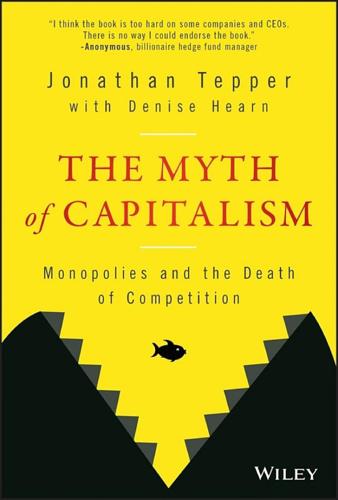
The Myth of Capitalism: Monopolies and the Death of Competition
by
Jonathan Tepper
Published 20 Nov 2018
A recent Bloomberg investigation of American workers found that people valued security and stability of their income more than large salaries or even doing fulfilling work. If we look at Maslow's hierarchy of needs, most workers are not asking to find their true calling at their jobs, as Weber suggested, but are simply asking to get paid a living wage and have certainty they'll have a job next week. Workers are asking for their most basic needs to be met; they're not asking for Porsches or even personal enlightenment (Figure 4.6). Figure 4.6 Maslow's Hierarchy of Needs SOURCE: Wikimedia Commons, https://commons.m.wikimedia.org/wiki/File:Maslow%27s_Hierarchy_of_Needs.svg.
…
Table of Contents Cover Introduction Chapter One: Where Buffett and Silicon Valley Billionaires Agree Key Thoughts from the Chapter Chapter Two: Dividing Up the Turf Key Thoughts from the Chapter Chapter Three: What Monopolies and King Kong Have in Common Lower Wages and Greater Income Inequality Higher Prices Fewer Startups and Jobs Lower Productivity Lower Investment Localism and Diversity Key Thoughts from the Chapter Chapter Four: Squeezing the Worker Key Thoughts from the Chapter Chapter Five: Silicon Valley Throws Some Shade Key Thoughts from the Chapter Chapter Six: Toll Roads and Robber Barons Monopolies (and Local Monopolies) Duopolies Oligopolies Key Thoughts from the Chapter Chapter Seven: What Trusts and Nazis Had in Common Key Thoughts from the Chapter Chapter Eight: Regulation and Chemotherapy Key Thoughts from the Chapter Chapter Nine: Morganizing America Key Thoughts from the Chapter Chapter Ten: The Missing Piece of the Puzzle Key Thoughts from the Chapter Conclusion: Economic and Political Freedom Principles for Reform Solutions and Remedies And Finally, What You Can Do … Notes Introduction Chapter 1: Where Buffett and Silicon Valley Billionaires Agree Chapter 2: Dividing Up the Turf Chapter 3: What Monopolies and King Kong Have in Common Chapter 4: Squeezing the Worker Chapter 5: Silicon Valley Throws Some Shade Chapter 6: Toll Roads and Robber Barons Chapter 7: What Trusts and Nazis Had in Common Chapter 8: Regulation and Chemotherapy Chapter 9: Morganizing America Chapter 10: The Missing Piece of the Puzzle Conclusion: Economic and Political Freedom Acknowledgments About the Authors Index End User License Agreement List of Tables Chapter 2 Table 2.1 The Largest Highly Concentrated Industries List of Illustrations Chapter 1 Figure 1.1 Merger Manias: 1890–2015 Figure 1.2 Collapse in the Number of US Public Companies Since 1996 Figure 1.3 Collapse in Initial Public Offerings (IPOs) Figure 1.4 Frequency of the Words “Competition,” “Competitors,” and “Pressure” in Annual Reports Chapter 2 Figure 2.1 Zero and Negative Central Bank Rates Promote Cartels Chapter 3 Figure 3.1 The US Economy Has Become Less Entrepreneurial over Time Figure 3.2 New Firms Play a Decreasing Role in the Economy Figure 3.3 Growth Phases of Organisms and Companies Figure 3.4 Lower Productivity Growth as Fewer Firms Enter Figure 3.5 Investment Significantly Lagging Profitability Chapter 4 Figure 4.1 Variant Perception US Wages Leading Indicator Figure 4.2 Percentage of Workers with Noncompete Agreements, by Group Figure 4.3 States That Do Not Enforce Noncompetes Have Higher Wages Figure 4.4 Rural Areas Are Lagging (aggregate wage growth, year-over-year, third quarter 2016) Figure 4.5 Monopsonies in Labor Markets: Commuting Zones with High Labor Concentration Figure 4.6 Maslow's Hierarchy of Needs Figure 4.7 Union Membership versus Income Distribution to Top 10% Figure 4.8 Wage Growth Closely Associated with Strikes Figure 4.9 The Great Suppression: Falling Unions and Increasing Licensing, 1950s–Today Chapter 6 Figure 6.1 Rail Mergers: Making of the Big Four Figure 6.2 Airline Mergers in Today's Oligopoly Figure 6.3 Banking Mergers in the United States Figure 6.4 Life Expectancy versus Health Expenditure over Time (1970–2014) Figure 6.5 Leading Global Meat Processing Firms Timeline of Ownership Changes, 1996–2016 Chapter 7 Figure 7.1 The First and Second Merger Waves (1890–1903, 1920–1930) Figure 7.2 Antitrust Enforcement Budget Figure 7.3 Twenty Years of Industry Consolidation Figure 7.4 Three Mega Merger Waves in the Past Three Decades Figure 7.5 Proportion of Completed Mergers and Acquisitions Chapter 8 Figure 8.1 Total US Patents Issued Annually, 1900–2014 Figure 8.2 Pages in the Federal Register (1936–2015) Figure 8.3 Companies That Lobby Extensively Have Higher Returns Figure 8.4 Revolving Door between Goldman Sachs and the Federal Government Figure 8.5 Revolving Door between Monsanto and the Federal Government Chapter 9 Figure 9.1 Largest Owners of US Banks (as of 2016 Q2) Figure 9.2 Share of Passively Managed Assets in US Markets Figure 9.3 S&P 500 Ownership by “Big 3” Figure 9.4 Net Investment by Nonfinancial Businesses Figure 9.5 Buybacks Zoom to Record Highs Chapter 10 Figure 10.1 Income Inequality in the United States, 1910–2015 Figure 10.2 The Global Wealth Pyramid, 2017 Figure 10.3 Rising Inequality.
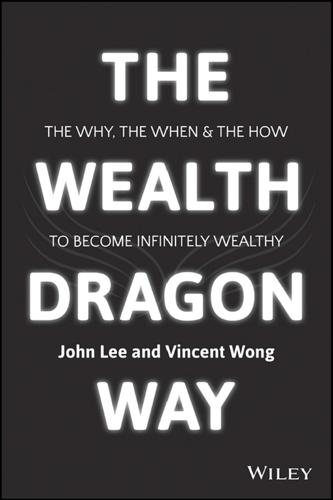
The Wealth Dragon Way: The Why, the When and the How to Become Infinitely Wealthy
by
John Lee
Published 13 Apr 2015
The Golden Rules Auctions: Caveat Emptor Learn before You Earn Deal Making Lease Options People before Property Chapter 14 Property Investment in Practice John's Property Stories Vince's Property Stories Chapter 15 Being a Wealth Dragon Top 10 Wealth Dragon Principles Additional Top Tips for Success Conclusion: The Now Final Word Index EULA List of Illustrations Chapter 2 Figure 2.1 A Pictorial View of the Relationship between Moral and Monetary Wealth Chapter 5 Figure 5.1 The Learning Curve Chapter 11 Figure 11.1 The Motorway of Wealth and Success Figure 11.2 Maslow's Hierarchy of Needs Preface We're going to discuss why to become wealthy extensively in this book, so we'd like to start by asking you this question: Why did you pick up this book? We're guessing it's because you'd like to have more money in your life. We can definitely show you how to achieve this, but why do you want more money in your life?
…
His theory stressed that we can't skip a level of the pyramid: If we don't have our basic needs met, we can't get our higher needs met. The same goes for building monetary wealth through the four stages. You simply can't reach financial abundance without going through and achieving the previous stages. You have to stack up the building blocks in order to reach the top of the pyramid. Figure 11.2 Maslow's Hierarchy of Needs Source: Wikipedia, 2007. So now we are ready to share with you exactly what we mean when we talk of infinite wealth. It's not an actual figure on a balance sheet or a static measure of net worth: It's a state of mind…it's the acceptance of financial abundance, which is the knowledge that there is no limit to how much wealth you can acquire, because you know you can keep on finding it and creating it.
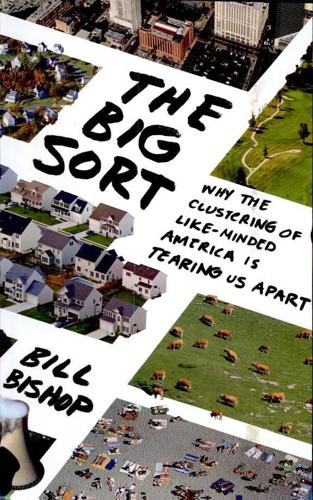
The Big Sort: Why the Clustering of Like-Minded America Is Tearing Us Apart
by
Bill Bishop
and
Robert G. Cushing
Published 6 May 2008
Unless advertisers could learn to distinguish the composer of "White Rabbit" from the president's daughter, O'Toole wrote, marketing research was useless. O'Toole argued that statistics on income, age, and education had lost relevance because there had been a "Revolution of the Individual" in the United States. The advertising executive didn't acknowledge having read about Abraham Maslow's hierarchy of needs or Ronald Inglehart's silent revolution. But he was describing the same phenomenon—the explosion of self-expression in a post-materialist economy. People were no longer willing to be treated as part of a mass because they didn't think of themselves that way, O'Toole told his fellow marketing executives.
…
See Migration Polsby, Nelson, [>] Poole, Keith, [>], [>], [>]–[>], [>] n Pope, Daniel, [>] Population density, [>]–[>] Porter, Michael, [>] Portland, Ore. comics business in, [>], [>]–[>]; economy of, [>]; educational level in, [>] n, and environmentalism, [>], as high-tech city, [>] n, [>], lifestyle of, [>]–[>], [>]; marketing expert in, [>]–[>], [>]–[>]; migration to, [>], [>], [>], political party membership in, [>]–[>]; presidential campaign of 2004 in, [>] n, [>]–[>]; and presidential election (2004), [>], [>]; as superstar city, [>]; transportation in, [>], [>]–[>] Portland Oregonian, [>] Post-industrial society, [>] Post-materialism and advertising, [>]; characteristics of, [>]–[>], and cultural creatives, [>]–[>], and families, [>], geography of, [>]; and high-tech cities, [>], of industrialized countries, [>]–[>], Inglehart's theory of, [>]–[>], [>]–[>], [>]–[>] n, and Maslow's hierarchy of needs, [>], news items on, [>]–[>]; and politics, [>], [>], and religion, [>]–[>], [>]; scholars' descriptions of and terms for, [>]. See also Culture shift, Lifestyle Poverty, child poverty, [>]; Johnson's War on Poverty, [>], [>]–[>]; and political party membership, [>], [>]–[>]; Third World poverty, [>] Powell, Lewis, [>]–[>], [>]–[>] nn PowerBars, [>] PraiseMoves, [>] Prejudice and discrimination, [>], [>]–[>], [>] n Prentice, Deborah, [>]–[>] Prescription medications, [>], [>]–[>] Presidential debates, [>] Presidential elections Big Sort and 2004 election, [>]–[>]; in California, [>]–[>]; and church membership and religious values, [>]–[>], [>], [>]–[>], [>]–[>]; and class of voters, [>]–[>], and confirmation bias, [>]–[>], [>], Democratic campaign in 2004, [>]–[>], [>]–[>], [>]–[>], and education, [>]–[>], [>]–[>]; exit polls on Election Day 2004, [>]–[>], [>] n; and families, [>]; and immigrants, [>], [>], and landslide counties (1948–2004), [>]–[>], [>], [>]–[>]; partisan views of 2000 election, [>]; and population density, [>]–[>]; and race, [>], [>]; Republican campaign in 2004, [>], [>]–[>], [>]–[>], [>] n, and tipping phenomenon, [>]–[>], 2008 election, [>] n, [>], voter identification (2004), [>]–[>], and voter turnout, [>], [>], [>]–[>], [>]; Wauconda, Wash., vote in, [>]; women's vote in 2004, [>] n .See also specific presidential candidates Princeton Survey Research Associates, [>] Privacy rights, [>], [>] Procter & Gamble, [>] Progressive magazine, [>] Progressive politics, [>], [>] Property rights movement, [>]–[>] Prosperity culture, [>]–[>] See also Lifestyle Protestant mainline denominations, in Austin, Tex , [>]–[>]. and beliefs about the Bible, [>], community-building purpose of churches, [>]; decline in membership of, [>], [>], [>], [>], [>]–[>], [>]; gay and lesbian church members of, [>], [>]–[>]; history of, [>]–[>], [>]–[>], [>], [>]–[>], [>]; list of, [>] n, and Public versus Private Protestantism, [>]–[>], [>], [>]–[>], [>], [>]–[>], and Social Gospel, [>]–[>], non, [>], [>], [>], [>], [>], [>]; and social reform, [>], [>]–[>], [>]–[>].
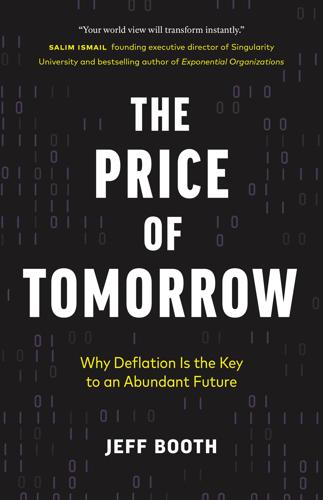
The Price of Tomorrow: Why Deflation Is the Key to an Abundant Future
by
Jeff Booth
Published 14 Jan 2020
In 1943, American psychologist Abraham Maslow (1908–1970) proposed a theory that all humans possess a hierarchy of needs from basic need to self-actualization: some needs were more important than others, and needs on one level must be satisfied before the next can be addressed.62 As an example, survival is a basic need and, as a result, is the first thing that motivates our behaviour. If you are starving, it is difficult to think about other needs. Maslow's Hierarchy of Human Needs One of the early criticisms of Maslow’s pyramid was that there was not enough scientific rigour to back it up. In 2011, Louis Tay and Ed Diener released a study to test his theory. According to Tay and Diener, “The findings suggest that Maslow’s theory is largely correct. In cultures all over the world the fulfillment of his proposed needs correlates with happiness.”63 It is worth considering where others are on Maslow’s framework as compared to where you are.
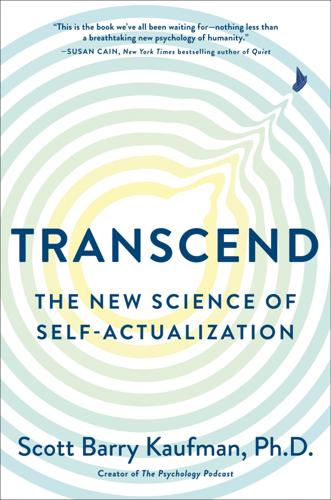
Transcend: The New Science of Self-Actualization
by
Scott Barry Kaufman
Published 6 Apr 2020
A history of the creation of management studies’ most famous symbol and its implications for management education. Academy of Management Learning & Education, 18(1), https://doi.org/10.5465/amle.2017.0351; Eaton, S. E. (2012). Maslow’s hierarchy of needs: Is the pyramid a hoax? Learning, Teaching and Leadership. Retrieved from https://drsaraheaton.wordpress.com/2012/08/04/maslows-hierarchy-of-needs; Kaufman, S. B. (2019). Who created Maslow’s iconic pyramid? Scientific American Blogs. Retrieved from https://blogs.scientificamerican.com/beautiful-minds/who-created-maslows-iconic-pyramid; Rowan, J. (1998). Maslow amended. Journal of Humanistic Psychology, 38(1), 81–92. 22. Miriam Kauderer, one of Maslow’s students at Brooklyn College, told me that in his class he did present to the students something resembling a pyramid to describe his hierarchy of needs.
…
See: Blackstock, The emergence of the breath of life theory; Kaufman, Honoring the wisdom of indigenous people with Richard Katz; Michel, K. L. (2014). Maslow’s hierarchy connected to Blackfoot beliefs. A Digital Native American. Retrieved from https://lincolnmichel.wordpress.com/2014/04/19/maslows-hierarchy-connected-to-blackfoot-beliefs. 11. Lowry, A. H. Maslow: An intellectual portrait. 12. Taylor, S. (2019). Original influences. Psychology Today. Retrieved from https://www.psychologytoday.com/us/blog/out-the-darkness/201903/original-influences. 13. Maslow, A. H. (1938). Report to the National Research Council. 14.
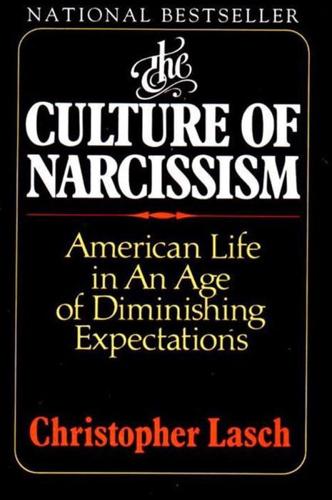
The Culture of Narcissism: American Life in an Age of Diminishing Expectations
by
Christopher Lasch
Published 1 Jan 1978
., "Pseudo-Mutuality in the Family Relations of Schizophrenics," ftyfl 'ry 21 (1958): 207, 210-11; Kohut, Analysis of the or MfeaiomXy Marriage and Family Living 16 (1954): 127 Douglas McGregor The Human Side ifEnterprise (New York: McGraw-Hill 1960), p. 21 ("limitations of authority") p. 23 ("interdependence"), pp. 35-42 (Maslow's hierarchy of needs) p. 46 (criticism of permissiveness) ch. 9 (participation) p. 234 ("constructive" criticism), pp. 232-35 (characteristics of a smoothly functioning group) p. 240 (analogy between industry and the family). For a popularization of some of these ideas see O. William Self pp. 40-41, 81.

Seeking SRE: Conversations About Running Production Systems at Scale
by
David N. Blank-Edelman
Published 16 Sep 2018
Spotify and, The Future: Speed at Scale, Safely SRE problems addressed by, Some SRE Problems Machine Learning Can Help Solve TensorFlow and TensorBoard, Using TensorFlow and TensorBoard-Using TensorFlow and TensorBoard time series: server requests waiting, Time series: server requests waiting-Time series: server requests waiting training a neural network from scratch, A neural network from scratch-A neural network from scratch MacNamara, Ríona, Do Docs Better, Do Docs Better: Integrating Documentation into the Engineering Workflow-Communicating the Value of Documentation Mangot, Dave, Replies Markdown, The Google Experience: g3doc and EngPlay, Pick the simplest markup language that supports your needs market-oriented teams, Get Rid of as Many Handoffs as Possible Markov model, Estimating durability markup language, Pick the simplest markup language that supports your needs Maslow's Hierarchy of Needs, Production Engineering at Facebook Master Service Agreements (MSAs), Negotiating SLAs with vendors McDuffee, Keith, Replies McEniry, Chris, Replies Mean Time Between Failures (MTBF), Always in a State of Partial Failure Mean Time to Detect (MTTD), Clearing the Way for SRE in the Enterprise Mean Time to Failure (MTTF)in Markov chain, Estimating durability inappropriate optimization of, Antipattern 13: Optimizing Failure Avoidance Rather Than Recovery Time (MTTF > MTTR)-Antipattern 13: Optimizing Failure Avoidance Rather Than Recovery Time (MTTF > MTTR) Mean Time to Recovery (MTTR), Antipattern 13: Optimizing Failure Avoidance Rather Than Recovery Time (MTTF > MTTR)-Antipattern 13: Optimizing Failure Avoidance Rather Than Recovery Time (MTTF > MTTR) Mean Time to Repair (MTTR), Always in a State of Partial Failuredefined, Clearing the Way for SRE in the Enterprise window of vulnerability and, Window of Vulnerability Mediratta, Bharat, Pattern 1: Birth of Automated Testing at Google Meickle, James, Beyond Burnout, Beyond Burnout-Mental Disorder Resources Menchaca, Joaquin, Replies mental disorders, persons withand diversity conversation, Mental Disorders Are Missing from the Diversity Conversation benefits for, Benefits-Benefits business environment, Sanity Isn’t a Business Requirement compensation in job application process, Compensation crisis and, Leaving defined, Defining Mental Disorders importance of detailed job postings, Application inclusivity as beneficial to all, Inclusivity for Anyone Helps Everyone ineffectiveness of common workplace strategies towards, Thoughts and Prayers Aren’t Scalable interviewing for job, Interviewing job duties, Job Duties leaving a job, Leaving on-call work and, Application onboarding packets, Onboarding pro-inclusion patterns/antipatterns, Full-Stack Inclusivity-Mental Disorder Resources promotion, Promotion resources, Mental Disorder Resources training, Training working conditions, Working Conditions-Working Conditions workplace inclusivity and, Beyond Burnout-Mental Disorder Resources mental health, Beyond Burnout-Mental Disorder Resourcescrises, Leaving defined, Beyond Burnout mental models, Mental Models mentorship programs, Training Mercereau, Jonathan, Working with Third Parties Shouldn’t Suck, Working with Third Parties Shouldn’t Suck-Closing Thoughts Messeri, Eran, Pattern 1: Birth of Automated Testing at Google, Pattern 3: Create a Shared Source Code Repository metrics, Orienting to a Data-Driven Approach, Setting goals and defining metrics of success, Monitoring, Metrics, and KPIs(see also incident metrics) Miasnikoŭ, Stas, Do Docs Better, Do Docs Better: Integrating Documentation into the Engineering Workflow-Communicating the Value of Documentation Michel, Drew, SRE Without SRE, SRE Without SRE: The Spotify Case Study-The Future: Speed at Scale, Safely microservicescontext vs. control at Netflix, Context Versus Control in SRE-Context Versus Control in SRE current state of microservice networking, Current State of Microservice Networking service mesh and (see service mesh) mid-sized organizations (see Soundcloud, SRE at) migration cost, Project Operating Expense and Abandonment Expense(see also abandonment expense) migrations, database reliability engineering and, Migration Patterns-Rollback testing Mineiro, Luis, Replies Mitchell, Tom, What Do We Mean by Learning?
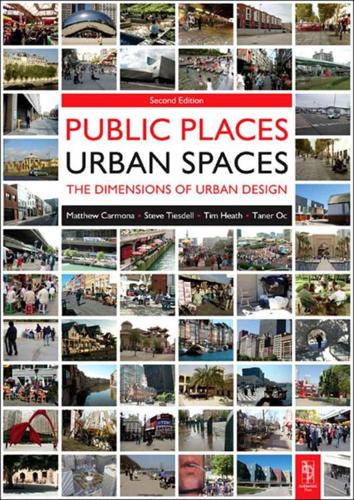
Public Places, Urban Spaces: The Dimensions of Urban Design
by
Matthew Carmona
,
Tim Heath
,
Steve Tiesdell
and
Taner Oc
Published 15 Feb 2010
section=publications_EDG http://www.transitorienteddevelopment.org http://vancouver.ca/commsvcs/currentplanning/urbandesign/index.htm Index A Accessibility 81, 137disability and 158–160 mobility and 160–161 physical access 156 robustness and 247 symbolic access 156 visual access 156 Active engagement 211 Active frontage 215–219 Activities in public space 236 Adelaide, Australia 101, 105 Advisers 282 Aesthetic preferences 85–101patterns and 170 Agency 258 Agency models 270 Air quality 228 Alexander, Christopher 3, 6, 7, 14, 102, 103, 145, 176, 177, 203, 214, 219, 258–262, 293–294, 369 ‘All-of-a-piece’ urban designers 19 Animation 19 Appleyard, Donald 8–10, 12, 39, 102, 103, 106, 113, 116, 170, 240, 269, 346, 369, 372, 378, 379 Appraisal 302–306area-wide appraisal 303–304 district/region-wide appraisal 302–303 site-specific appraisal 305–306 Architectural code 317 Architecture 184–186types 78–92see alsoBuildings Authenticity, lack of in invented places 128–130 B Bacon, Edward 57, 111, 122, 175, 208, 259, 264, 321, 353, 370, 372, 374, 383 Balance 139 Balanced communities 142 Banerjee, Tribid 137 Barcelona, Spain 138 Barnett, Jonathan 16, 93, 97, 259, 285, 370 Battery Park City, New York, USA 93 Beijing, China 127 Ben-Joseph, Eran 12, 91, 92, 108, 109, 316, 370, 384–386 Bentley, Ian 4, 9, 11, 13, 16, 50, 56, 60, 77, 82, 91, 96, 101, 103, 121, 149, 177, 220, 227, 254, 256, 288, 289, 291, 333, 370, 371 Biddulph, Michael 42, 102, 109, 124, 142, 313, 324, 331, 370–371, 381, 385 Bilbao, Spain 45 Birmingham, England/UK 108 Bosselmann, Peter 175, 182, 331, 333, 343, 348, 351, 353, 356, 370, 371 Boston, Massachusetts, USA 193 Boundaries: edges 113–115 neighbourhoods 141–147 Breheny, Michael 25, 39, 223, 371, 382 Brisbane, Australia 101 Builders 283 Buildings as constituents of urban blocks 93–94 attributes of good buildings 243–244 freestanding buildings 85–86, 186 structures 61 symbolic role of 118 urban architecture 184–186 Built environment professions, roles of 12–13 Burgage plots 78 Burgess's Concentric Zone Model 28 C CABE (Commission for Architecture and the Built Environment) 53 Cadastral (street) pattern 80–82accessibility 81 permeability 81 persistence of 101 Calthorpe, Peter 10, 15, 41–42, 84, 108, 226, 371–372 Capital web 234–240 Carmona, Matthew 7, 12–13, 55–59, 70–71, 137–139, 184–185, 219–220, 233–236, 263–265, 278, 284, 291–292, 310–311, 321–331, 355–356, 364–368 Carr, Stephen 141, 154–155, 208–209, 211, 372, 380 Cars 103accessibility and 153 impact on urban form 38 motorist's visual experience 170 parking 217 problems of car dependency 37 road networks 77, 90 traffic calming measures 237 traffic reduction proposals 238see alsoTransport Central Business District (CBD) 28block structures 57, 78, 83 Change 84management of 243–244 robustness 253–256 time frames of 252–253 urban environment 14see alsoUrban development Charter for New Urbanism 41–42 Chicago 83 Chicago School 28, 29 Childs, Mark 16, 169, 262, 263, 372see alsoconcinnity Choice 49 Circulation mesh 101 Cities 101Central Business District (CBD) 25block structures 57, 92, 93 identity 112 images of 127districts 128 edges 101 landmarks 113 nodes 41 paths 113 transformations in urban form 230industrial cities 29 informational age urban form 31–32 post-industrial urban form 29–31see alsoUrban design; Urban development; Urban environment; Urban morphology; Urban space City Beautiful Movement 3 Civic design 3 Comfort 8, 160 Communication 210communication gaps 332–335designer–non-designer gap 333 designer–user gap 334 powerful–powerless gap 334 professional–layperson gap 332–333 reality–representation gap 333 informative 349 persuasive 269 technology 31–34, 46impact on urban form 38see alsoRepresentation Communities 10balanced communities 55, 57–59 community motivators or catalysts 14 gated communities 149 role in development process 279see alsoParticipation Community urban design 17 Compact city/cities 26 Competition 45, 61 Computer imaging and animation 354 Computer-aided design 350–351 Computers, participation and 229 Concept providers 19 Conceptual urbanism 40, 41 Concinnity 262 Congress for New Urbanism 9–10 Connotation 117 Conservation 245–247, 249management 270 Consultation 284 Containment 176, 178 Continuity of place 247–248 Controls 31, 150, 258public sector role 295see alsoPublic sector smart controls 34 zoning controls 308see alsoAppraisal Conzen, John 77, 78, 183, 252, 373 Copenhagen 242 Copenhagen, Denmark 175 Crawford, Margaret 44, 372–373, 378, 381, 385 Crime 147displacement 153 fear of victimisation 165 perception of 169 prevention 307‘broken windows’ theory 328 dispositional approaches 150 situational approaches 150see alsoSecurity Crime Prevention Through Environment Design (CPTED) 150 Cul-de-sacs 151, 152 Cullen, Gordon 3, 6–7, 170, 174–175, 177, 182–185, 316, 345–346, 353, 373, 376see alsoTownscape Culture 113, 124mass culture 124 Curvilinear layouts 83 Cuthbert, Alexander 4, 5, 52, 55, 165, 205, 373 D Decentralisation 32, 25, 39 Democracies 63 Denotation 117 Density 223–226benefits of higher density 223 urban form and 224 Denver, Colorado, USA 42 Design 3, 71–74policies 18see alsoUrban design Design briefs 312–313 Design codes 316–319 Design frameworks327 seeUrban design Detroit, Michigan, USA 23 Developers 275–279motivations of 275–279 types of 275 Development advisers 282 Development funders 287 Development pipeline model 271, 270–274development feasibility 270–274market conditions 272–273 ownership constraints 271 physical conditions 271–272 project viability 273–274 public procedures 272 development pressure and prospects 270see alsoDevelopment process Development process 11–12, 269–295actors and roles 269–270, 274–275adjacent landowners 283 advisers 282 builders 282 developers 275–279 funders 280–281 investors 280 landowners 279–280 motivations of 285 occupiers 284 public sector 284–286 land and property development 269–274 models 270agency models 270 equilibrium models 270 event-sequence models 270 institutional models 270 structure models 270see alsoDevelopment pipeline model quality issues 286–295monitoring and review 324–325 producer–consumer gap 286–288 public sector role 297, 301 urban design quality 291–295 urban designer's role 288see alsoUrban development Diagrams seeRepresentation Disability 158–160 Discovery 213–214, 258 Disneyland 129 Disneyworld 152–153 Displacement 152 Districts 115 Dovey, Kim 70, 117, 119, 120, 123, 124, 130, 264, 331, 374 Duany, Andres 9, 12, 31, 37, 42, 80, 90–92, 109, 143–144, 147, 188, 222, 234, 257, 317–320, 333, 355, 374see alsoNew Urbanism Duany & Plater-Zyberk (DPZ) 9, 37, 144, 317–318, 355, 374 E Eco-masterplanning 49 Edge cities 41 Edges 89–90, 173–178 Edinburgh, Scotland/UK 197 Education 325–326 Electronic communication 21, 32impact on urban form 38 Ellin, Nan 10, 14, 119, 129–130, 140–141, 146, 148, 155, 263, 282, 297, 374–375see alsoIntegral Urbanism Enclosure 179squares 170 streets 182–183 Engagement 209, 213active 211–212 passive 209 English Heritage 196, 304 Environment seeUrban environment Environmental design 93, 150–152lighting 228–229 microclimate 226 sun and shade 227 wind 227–228 Environmental footprints 53 Environmental issues 51–55fossil fuel consumption 37, 38 global warming 38, 46 pollution 51, 55 sustainable development 7–8, 11, 51, 233by spatial scale 58–59 density and 224 strategies for 200, 218 Environmental meaning 117–119 Environmental perception 111–119 Environmental symbolism 117–119 Equilibrium models 270 Equitable environments 158disability 158–166 mobility 160–161 social segregation 145, 146 Essex Design Guide 92 Event-sequence models 270see alsoDevelopment pipeline model Everyday Urbanism 40 Exclusion 158–160disability and 158–160 mobility and 145 strategies 150–153 voluntary exclusion 148 Facades 178, 186–187 F Facilitators of urban events 19 Fear of victimisation 148 Figure-ground techniques 346 Figure-ground studies 190 Finance 269funders 280–281 investors 283 Fishman, Robert 15 Floorscape 193–195 Florida, Richard 8 Flusty, Steven 29, 156, 205, 208, 211–213, 373, 375 Footpath design 234–236 Fossil fuel consumption 37–38, 46, 51 Fragmentation 11–12, 64by roads 90–91, 256 social fragmentation 257 Frontage 183 Functional zoning 220–222 Funders 280–282 G Gans, Herbert J 133, 143, 144, 253, 375 Garages 216 Garden cities 25 Garden suburbs 199 Garreau, Joel 27, 28, 259, 262, 314, 375see alsoEdge cities Gated communities 291 Geddes, Patrick 319 Gehl, Jan 3, 7, 110, 202, 207–211, 236, 242, 259–261, 375see alsoactivities in public space Geographic Information Systems (GIS) 346, 349 Gestalt theory 170 Glasgow, Scotland/UK 193 Global context 51–55 Global warming 38, 46 Globalisation 124 Governance 64 Government 63–65market–state relations 65–68 reinventing of 69 structure of 77 Grid erosion 90 Guideline designers 19 H Harmonic relationships 173 Harvey, David 22, 55, 61, 68, 69, 124, 125, 130, 376 Hearing 111 Hebbert, Michael 15, 86, 88, 105, 109, 229, 377 Hierarchy of human needs 134, 136 Hillier, Bill 82, 150–152, 203–208, 377 Home Zones 109 Hulme, Manchester 280 I Icon, iconic 117, 126–127see alsostarchitect Identity 90, 92personalisation and 121 Image 112–113 Imageability 113 Images 113districts 115 edges 114 landmarks 116 nodes 115 paths 114 Incentive zoning 308 Incivilities 148 Industrial cities 22 Industrial Revolution 25 Informational age 31 Infrastructure 230designers 16–17 Institutional models 270 Integral Urbanism 10, 14, 263see alsoEllin, Nan Integration 187–193 Internet 342 Invented places 128–130lack of authenticity 132 manufactured difference 103–104 other-directedness 130 superficiality 130 Investors 256 Involvement seeParticipation J Jacobs, Allan 8–9, 12 Jacobs, Jane 3, 7, 10, 41, 135, 150, 151, 202, 258, 265, 378 Japanese cities 50 Jarvis Bob 6 K Kaliski, John 44 Kelbaugh, Douglas 23 Keno Capitalism 29 Kentlands, Maryland, USA 42, 317, 318see alsoNew Urbanism Kinaesthetic experience 170–176 Knox, Paul 23, 28, 30, 31, 39, 59, 112, 117–119, 121, 124, 166, 213, 244, 275, 279, 371, 374, 378–379, 381 Koetter, Fred 78, 94–95, 259, 384 Koolhaas, Rem 45 Krier, Leon 86, 95, 97, 102, 142, 172, 266, 379 Krier, Rob 95, 96, 145, 179, 222, 379 Kunstler, John Howard 14, 26, 37, 38, 227, 258, 379 L Land development 264see alsoDevelopment process; Urban development Land markets 5 Land uses 13mixed use 220–223 Land value 23 Landmarks 116 Landowners 279–280, 292adjacent landowners 283–284 Landscape code 256 Landscape Urbanism 45 Landscaping 198hard 199 soft 198, 199–200 Lang, Jon 12, 13, 17–19, 42, 48, 54–55, 67, 103, 111–112, 133, 136, 220, 332, 361, 379 Las Vegas, Nevada, USA 23 Lawson, Bryan 96 Le Corbusier 6, 21–23, 85, 87, 183, 369, 371, 379 Lefebvre, Henri 44, 84, 86, 202, 241, 246, 380 Leinberger, Christopher 33, 34, 37, 60, 62, 91, 269, 281–282, 297, 380 Lighting 228–229natural lighting 228 street lighting 228 Local context 47–51 London 48, 253, 299Canary Wharf 70 Docklands 70 Los Angeles School 29 Los Angeles, California, USA 29 Loukaitou-Sideris, Anastassia 11 Lynch, Kevin 3, 6–8, 10, 112, 113–116, 121, 145, 147, 154, 169, 170, 212, 241, 243, 245–247, 253–254, 258, 297, 302, 305, 345, 369, 380 M MacCormac, Richard 72, 216–218, 223, 239, 247, 380 McGlynn, Sue 9, 12, 14, 288–289, 334, 346, 370, 377, 380 Madanipour, Ali 4, 59, 124, 215, 219, 257, 277, 380, 381 Maintenance 328–329 Management 326–329conservation 327–328 maintenance 328–329 public realm 139–141 regeneration 327 transport 326–327 Managerialism 376 Manchester, England/UK 115 Manhattan, New York, USA 33, 83, 100 Manipulation 331–335 Maps seeRepresentation Market context 55–60, 290, 364market–state relations 65–68 operation of markets 60–61 Marketplace urbanism 40, 41 Marshall, Stephen 20, 23, 91–93, 261, 262, 372, 378, 381 Maslow's hierarchy of needs 134 Mass culture 124 Master plans 229 Meaning 113, 116–117neighbourhoods 141–147 Melbourne, Australia 70 Microclimate 226–228 Mitchell, Bill 31–34, 49, 50, 137, 159, 160, 239 Mixed use 220–223 Mobility 160–161 Models 351–353Burgess's Concentric Zone Model 28 conceptual models 352 development process 269–295agency models 270 equilibrium models 270 event-sequence models 270 institutional models 270 structure models 270 presentation models 352 working models 352see alsoDevelopment pipeline model Modernism 119Modernist urban space 23, 77 New Modernism 25 symbolism and 119 Monderman, Hans 108, 197, 198 Montgomery, John 112, 120, 122, 200, 206, 221, 244, 381 Monuments 180 Moudon, Anne Vernez 77, 79, 102, 108, 222, 228, 254, 256, 266 Movement, through public space 201 N National Playing Fields Association 234 Neighbourhoods 141–147boundaries 145 mixed-use 220–223 neo-traditional neighbourhoods (NTDs) 9–10 size of 144, 149 social mix and balanced communities 145 social relevance and meaning 145 traditional neighbourhood developments (TNDs) 9–10, 142 types of 116 Neighbourhood Unit 143 Neo-liberalism 68 Neo-traditional neighbourhoods (NTDs) 9–10 Newman, Oscar 24, 37–40, 51, 92, 150, 151, 224, 335, 376, 382 New Modernism 25 New Urbanism 9–10, 41–43Charter for 41–42 New Urbanist codes 317, 319 New York, USA 32 Nodes 115 Noise 220 O Obsolescence 248–252 Occupiers 284 Open space 234 Opportunity reduction (approaches to crime prevention) 150 Opportunity space 65 Organic growth 262 Organicists 14 Orthographic projections 348, 349 Ownership constraints 271 P Paraline drawings 349, 350 Paris 10 Parking 238–239see alsoCars Participation 297, 329bottom-up approaches 336 top-down approaches 336 Passive engagement 209–210 Paths 13–14 Patterns 6–9aesthetic preferences and 169 plot pattern 79–80see alsoCadastral (street) pattern Pedestrian activity maps 344 Pedestrian pockets 9–10 Pedestrianisation 235Copenhagen 242, 260–261 Perception 111–119environmental perception 111–119 of crime 149 Performance indicators 324 Perimeter cities 26 Permeability 99 Personalisation 121 Perspective drawings 349–350 Persuasion 331–335 Perry, Clarence 87, 89, 141–143, 382see alsoNeighbourhood Unit Perth, Australia 101 Phenomenology 112, 120 Photomontages 350 Philadelphia, Pennsylvania, USA 250 Phoenix, Arizona, USA 38 Physical conditions 271–272 Place image 112–113 Place identity 111, 112 Place theming 128 Place attributes of successful places 206 construction of 119–125 identity of 121 invented places 128–130lack of authenticity 132 other-directedness 130 superficiality 130 making places tradition of urban design 7 sense of 120–121neighbourhoods and 141–147 personalisation 121 territoriality 121 significance of 20 Placelessness 123–125globalisation and 123 loss of attachment to territory 124 mass culture and 124 Plants 209 Plater-Zyberk, Elizabeth 9, 37, 144, 317, 330, 374see alsoNew Urbanism Plot pattern 79–80 Pod developments 90–91 Policy 306–325 Policy makers 19 Politics 63 Pollution 33, 39 Portland, Oregon, USA 363 Postmodernism 119, 128, 130superficiality 130 symbolism and 117–119 Post Urbanism 43 Poundbury, Dorchester, UK 42, 236 Power 118, 119, 332 Powergram 288–291, 334 Prague, Czech Republic 80 Precinct principle 89 Preservation 246–247, 252 Privacy 219–220aural privacy 220 visual privacy 219–220 Private sector 65 Privatisation 68, 140, 148 Producer-consumer gaps 277, 285 Professional–layperson gap 332–333 Project for Public Space 127, 134, 138, 206, 292 Project viability 273–274 Property development 4see alsoDevelopment process; Urban development Property markets 222 Public goods 62 Public life 138–139 Public participation seeParticipation Public procedures 272 Public realm 10, 137–141decline of 141 design 17 exclusion strategies 156 function of 201 management and 157–158 physical and sociocultural public realms 122, 139–141see alsoPublic space Public sector 67, 69–70, 272appraisal 273area-wide appraisal 303–305 district/region-wide scale 302–303 site-specific appraisal 305–306 design briefs 312–313 design control/review 320–322 design frameworks and codes 313–316 intervention by 71 management role 298conservation 301 maintenance 328–329 regeneration 327 transport 326–327 monitoring and review 324–325 policy 229 role in development process 279 role in quality control 306 Public space 201, 205–206comfort 209 discovery 213 edges 212 engagement 209–211active 211–212 passive 209–210 exclusion strategies 157 external 139 internal 139 movement through 201, 202, 204 network 83–85 quasi-public space 138 relaxation 209 shape 266 social use of 98–103see alsoPublic realm; Urban space Punter, John 6, 35, 63, 71, 91, 122, 257, 298, 306, 308, 310, 313, 319, 322, 324, 325, 347, 355, 356, 370, 372, 383 Q Quality in Town and Country initiative 71 Quality issues 11, 12, 13constraints 361, 362 monitoring and review 324–325 producer–consumer gap 277, 286–288 public sector role 295, 301see alsoPublic sector urban design quality 336 urban designer's role 288 Quasi-public space 138 R Radiance 180, 182, 185 Reality–representation gap 333 Redevelopment 22, 88, 89 Regeneration 327 Regulatory context 68government structure 64 market–state relations 65–68 Relaxation 209 Relph, Edward 13, 112, 119–125, 128, 130, 131see alsoplacelessness Representation 343–354analytical representations 344–348 computer imaging and animation 354 computer-aided design 354 conceptual representations 343–344 four dimensions 353–354 Geographic Information Systems (GIS) 348 models 349 orthographic projections 349 paraline drawings 350 perspective drawings 349–350 photomontages 350 serial vision 353–354 sketches 350 three dimensions 349–353 two dimensions 348–349 video animations 354 Resilience 253–256 Responsive environments 9 Reurbanism – seeFishman, Robert Rhyme 172 Rhythm 172 Rhythmic repetition 241 Road design 234–238 Road networks 86impact on urban form 21, 25, 32see alsoCars; Transport Robustness 253–256access and 304 cross-sectional depth and 254, 256 room shape and size and 254, 256 Rome, Italy 175 Rowe, Colin 78, 94, 95, 259, 384see alsoFigure-ground studies Rybczynski, Witold 83, 131, 300, 384 S Safety 147–15324-hour cities 244 road design and 234–238 San Francisco, California, USA 10 Savannah, South Carolina, USA 82 Scale 6 Schwarzer, Mitchell 36–37, 40–41, 159, 160, 166, 239 Seaside, Florida 42, 98see alsoNew Urbanism Seaside, Florida 317 Seasonal cycle 329 Seattle, Washington 51, 101 Security 147–154animation/peopling approach 153 crime prevention 150 fortress approach 153 management/regulatory approach 153 panoptic approach 153see alsoCrime Semiotics 117 Serial vision 353–354 Servicing 238–239 Seven Clamps of Urban Design 12 Seoul, South Korea 84 Shade 226 Shanghai, China 231 Shared streets 109 Short-termism 62, 257, 275, 360 Sieve maps 17 Sienna, Italy 176, 300 Signification 116–117 Simulation 130see alsoInvented places Sitte, Camillo 6–7, 83, 95, 177–184, 186, 200, 372, 385 Situational approach (to crime prevention) 150 Sketches 350 Slow Food 39 Slow City 39 Smart controls 297 Smart growth 36, 46 Smell 111 Social costs 62 Social mix 145–146 Social segregation 145, 146, 147 Social space 83, 84, 86see alsoPublic space Social urbanism 40, 41 Sonic environment 111 Soundscape 111 Southworth, Michael 26, 91, 92, 108–109, 215–216, 235, 236, 302, 316, 319, 370, 375, 380, 385 Space Left Over After Planning (SLOAP) 86, 234 Space seePublic space see alsoUrban environment; Urban space Space syntax 203–205 Spatial analysis 302 Spatial containment 176, 178 Squares 179–182amorphous squares 182 closed squares 181 dominated squares 182 enclosure 180 freestanding sculptural mass 180 grouped squares 182 monuments 180 nuclear squares 182 shape 180 Starchitect 125, 127see alsoicon, iconic Stevens, Quentin 205, 208, 211–213, 372, 375, 382, 385 Sternberg, Ernst 14 Street furniture 196–198 Street Reclaiming 80 Streets 182–183lighting 228–229 pattern seeCadastral (street) pattern; Road networks Structure models 270 Suburbs 29–31 Sunlight 227–228 Superficiality 130 Surveillance 150–154 Sustainable development 51–55, 307by spatial scale 58–59 density and 225 strategies for 56–57 SWOT analysis 306 Sydney, Australia 126 Symbolism 117–119 T Talen, Emily 42, 143, 147, 294, 319, 374, 385 Technical standards 12–13 Telecommunications 17impact on urban form 38 Territoriality 121loss of attachment to territory 125 Theme parks 129crime prevention 150, 151, 153see alsoInvented places Third place 138–139 Third way 71 Tibbalds, Francis 4, 6, 9, 47, 187, 255, 258, 264, 361, 386 Tiesdell, Steve 46, 65, 140, 147–149, 153, 220, 244, 269, 290–291, 363 Time cycles 241–244 management of 243–244 march of 244–257 time frames of change 252–253 Tissue studies 346 Tokyo (Japan) 50, 196 Toronto (Canada) 99 Total designers 19 Touch 111 Town Centre Management 298 Townscape 183–184 Traditional neighbourhood developments (TNDs) 9, 142 Traditional urbanism 40 Traffic calming measures 237 Transit-oriented development (TOD) 10, 226 Transport environmental sustainability issues 35 impact on urban form 29, 31, 36, 39 management 326 road networks 90 technology 31–34see alsoCadastral (street) pattern; Cars Trancik, Roger 86, 176, 332, 336, 386 Transect 311, 319see alsonew Urbanism, Andres Duany Trees 199air quality and 228 shade 227 wind protection 226, 227 Triangulation 211 Twenty four-hour society 243 U Urban architecture 184–186see alsoBuildings Urban code 317 Urban conservationists 19 Urban design 3–20, 269as joining up 13–16the professions 14–16 the urban environment 14 challenges 361 clients and consumers of 18–20 controls 12 definitions 4, 10ambiguities in 4 relational definitions 4 scale and 19 design briefs 312–313 design codes 316–319 design review and evaluation 320–324 frameworks 10–11Allan Jacobs and Donald Appleyard 8–9 Francis Tibbalds 9 Kevin Lynch 8 responsive environments 9 The Congress for New Urbanism 9–10 global context 51–55 holistic approach 363–366 ‘knowing’ urban design 17, 72, 162 local context 47–51 market context 55–62 monitoring and review 324–325 need for 11–13 practice 17–20types of 17 process 71–74 quality 272barriers to 357 questioning 360 regulatory context 63 Seven Clamps of Urban Design 13 technical standards 13 traditions of thought 6–8making places tradition 7–8 social usage tradition 7 visual-artistic tradition 6–7 ‘unknowing’ urban design 11, 17 Urban Design Alliance (UDAL) 15Placecheck 304 Urban Design Group (UDG) 15 Urban development change management 225 development briefs 312–313 environmental sustainability 35, 37, 45, 69, 165density and 225 strategies for 22 sustainable design by spatial scale 58–59 quality 286–295 smart growth 36 transformations in urban form 39industrial cities 21, 22 informational age urban form 31–34 post-industrial urban form 29see alsoDevelopment process; Urban design Urban entertainment destination (UED) 129see alsoInvented places Urban environment changes 49time frames of 252–253 components of 55 culture relationship 39 environment-people interaction 133environmental determinism 133 environmental possibilism 133 environmental probabilism 133 environmental perception 111–112 equitable environments 158–166disability 158–160 mobility 160–161 social segregation 145 management 277, 283, 326conservation 327–328 maintenance 328–329 regeneration 327 transport 326–327 quality issues 10, 12, 15public sector role 295, 301 urban environmental product 11see alsoCities; Urban development Urban grids 88grid erosion 90 Urban managers 19 Urban morphology 77–78building structures 78–79 cadastral (street) pattern 80–81 capital web 234–240 density and 225 freestanding buildings 85, 186 land uses 78 plot pattern 79–80 pod developments 90–91 public space network 83–85 return to streets 92 road networks 86 super blocks 89–90 urban blocks 93–94block sizes 96–99 persistence of block pattern 101see alsoCities Urban population growth 25 Urban quarters 142 Urban regeneration 327 Urban renaissance 35 Urban space 21, 176design 21–23 Modernist 22–23, 77 positive and negative space 176 positive space creation 176–179 traditional 77return to 114see alsoPublic space Urban Task Force 35, 71, 223, 225–226, 237, 257, 327, 386 Urban villages 142, 144 Urban Villages Forum 142 V Vegetation 199 Venice 175 Venturi, Robert 23, 128 Victimisation 148 Video animations 354 Virtual reality 354 Vision 111 Vision makers 19 Visual experience aesthetic preferences 169 motorists 175 patterns and 170 Visual privacy 219–220 Visual qualities 176–200 Voluntary exclusion 148 W Washington DC 28, 83 Wind environment 227–228 Whyte, William H (Holly) 7, 106, 135, 208, 210–211, 215, 379, 387 Woonerfs 109 World Wide Web 342 Y Yeang, Ken 49, 364, 387see alsoeco-masterplanning Z Zoning 220–223controls 297 incentive zoning 308 Zucker, Paul 95, 176, 179, 181–182, 387 Zukin, Sharon 61, 124, 128, 137, 213, 387